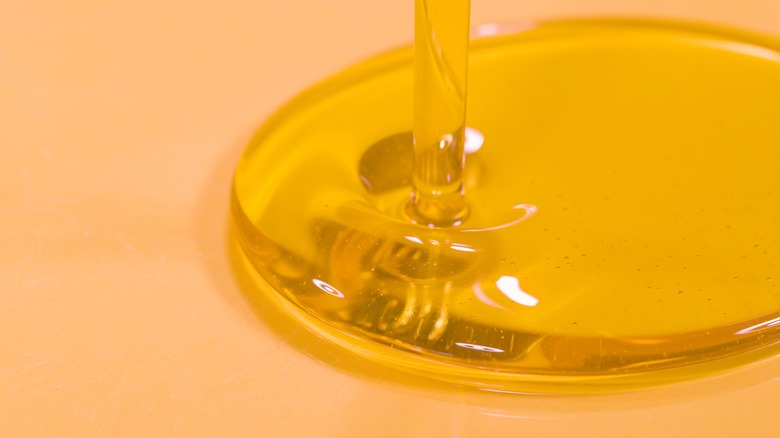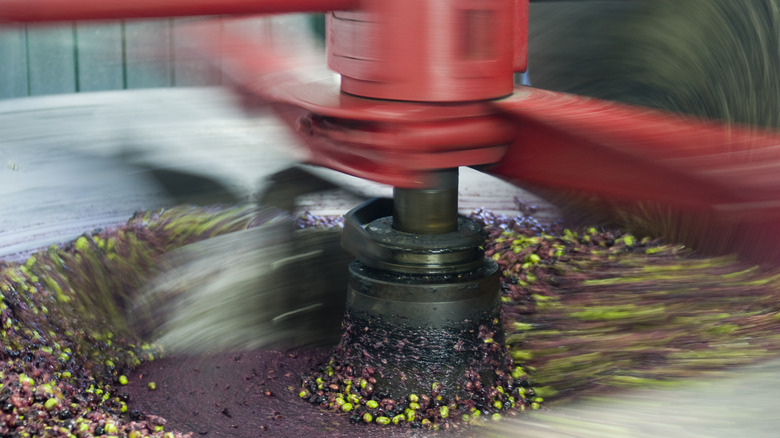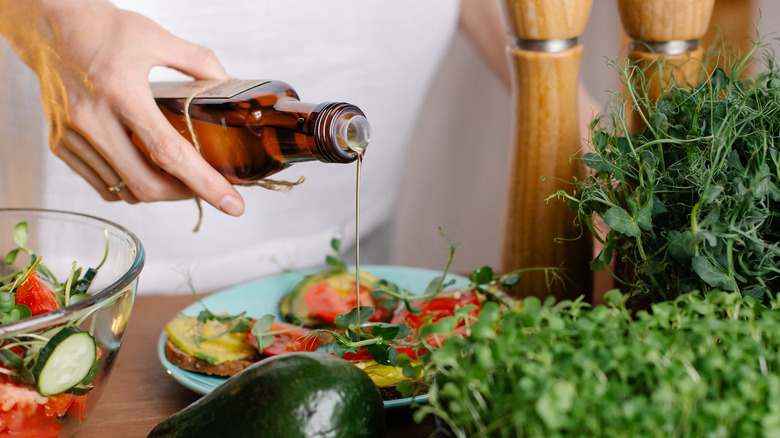What Temperature Are Cold Pressed Oils Made At
Whether it's a dark glass bottle of olive oil or a plastic jug of vegetable oil, there is a myriad of labels on the oils you come across on shelves. Regular versus extra-virgin, refined versus unrefined, expeller versus cold-pressed, it can be a daunting task to decipher what's best to come home with you and earn a spot in your pantry. So what is cold-pressed oil, exactly? Do they smash olives in a freezer somewhere?
To explain, you have to understand how plant-based oil is made. Edible oils come from different parts of the plant, but typically the nut or seed, and sometimes the fruit or flesh, according to How Products are Made. Think of walnut or flaxseed oil (nut or seed), olive oil (fruit), and avocado or coconut oil (flesh).
If you were to squash an olive between your fingertips, it probably wouldn't yield enough oil suitable for searing let alone drizzling on your salad. How do they get so much oil out of a plant? Turns out, there are several different methods, cold-pressing being just one of them.
Oils are extracted in one of three ways
There are a few methods for extracting cooking oils from a plant and rendering them edible but they can be broken down into two categories — chemical extraction or physical pressing.
The chemical method of extracting oil involves washing the seed, germ, or fruit with a chemical solvent to release the fats or oils. After the oil is extracted, it is heated to just over 200 degrees Fahrenheit to burn off any remaining solvent. The oil is then typically bleached, deodorized, and refined, resulting in a highly processed final product (via Shay and Company).
There are two physical pressing methods, hydraulic and expeller. Expeller-pressed oil is made with a pressing machine that pushes the seed, germ, or fruit of the plant through a machine with a screw-shaped cavity. While no heat is applied in the process, the friction and pressure that result from the pressing and pushing can create heat up to 210 degrees Fahrenheit, per Good Nature.
The oil that is extracted with a hydraulic press (or sometimes a bladder press or expeller press with less friction) is what we know as a true "cold-pressed" oil, according to The Culinary Pro. It's a simple method of extracting oil from the crop, but unlike expeller-pressing, the temperature is controlled and kept low.
How cold is cold-pressed?
To be considered a cold-pressed oil, the temperature threshold allowed is 122 degrees Fahrenheit. Any hotter and the natural enzymes in the oil will be destroyed, thus degrading its nutritional value in the process, per Shay and Company.
According to The Culinary Pro, the term "cold-pressed" is not regulated, but overall, industry standard is to keep it around 120 degrees Fahrenheit. Others, like the International Olive Council, say that the temperature shouldn't go above 80.6 degrees Fahrenheit, according to the North American Olive Oil Association.
So, not cold in the way you might think, but colder than the other methods. It's the most natural method of extraction and allows the crop to retain its innate color and nutritional value. Unfortunately, it is the least efficient method of extracting oil and therefore usually results in the most expensive products.
It will probably come as no surprise to learn that the best way to consume and cook with cold-pressed oils is to use very little heat if any at all. To maintain all the health benefits and integrity of the oil, Pristine Organics recommends sticking to low- or medium-heat cooking methods.


